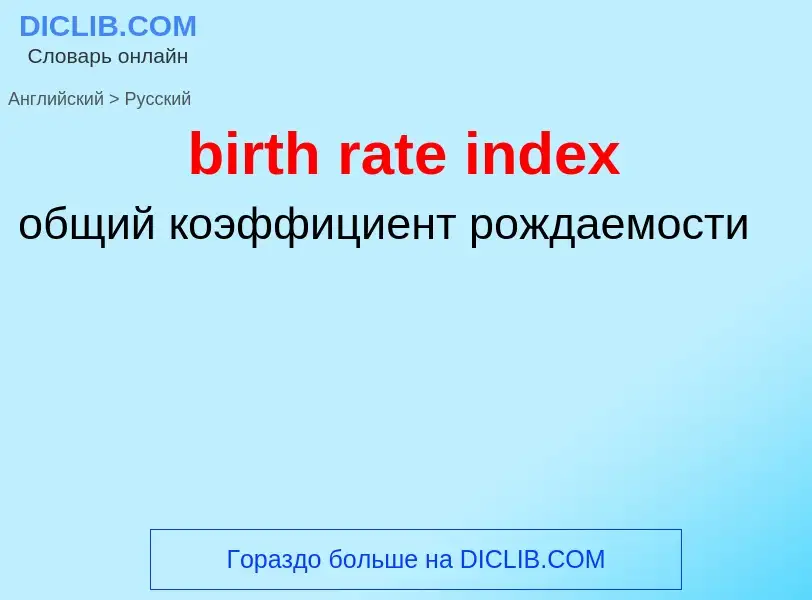Перевод и анализ слов искусственным интеллектом ChatGPT
На этой странице Вы можете получить подробный анализ слова или словосочетания, произведенный с помощью лучшей на сегодняшний день технологии искусственного интеллекта:
- как употребляется слово
- частота употребления
- используется оно чаще в устной или письменной речи
- варианты перевода слова
- примеры употребления (несколько фраз с переводом)
- этимология
birth rate index - перевод на русский
общая лексика
рождаемость
математика
уровень рождаемости
медицина
показатель рождаемости
Определение
Википедия
Birth rate, also known as natality, is the total number of live human births per 1,000 population for a given period divided by the length of the period in years. The number of live births is normally taken from a universal registration system for births; population counts from a census, and estimation through specialized demographic techniques. The birth rate (along with mortality and migration rates) is used to calculate population growth. The estimated average population may be taken as the mid-year population.
When the crude death rate is subtracted from the crude birth rate (CBR), the result is the rate of natural increase (RNI). This is equal to the rate of population change (excluding migration).
The total (crude) birth rate (which includes all births)—typically indicated as births per 1,000 population—is distinguished from a set of age-specific rates (the number of births per 1,000 persons, or more usually 1,000 females, in each age group). The first known use of the term "birth rate" in English was in 1856.
The average global birth rate was 18.1 births per 1,000 total population in 2021. The death rate was 7.7 per 1,000. The RNI was thus 1.6 percent. In 2012 the average global birth rate was 19.611 according to the World Bank and 19.15 births per 1,000 total population according to the CIA, compared to 20.09 per 1,000 total population in 2007.
The 2021 average of 18.1 births per 1,000 total population equates to approximately 4.3 births per second or about 259 births per minute for the world.

![Placard showing negative effects of lack of family planning and having too many [[child]]ren and [[infant]]s ([[Ethiopia]]) Placard showing negative effects of lack of family planning and having too many [[child]]ren and [[infant]]s ([[Ethiopia]])](https://commons.wikimedia.org/wiki/Special:FilePath/Familiy Planning Ethiopia (bad effects).jpg?width=200)
![Historic population of [[Japan]] (1920-2010) with projected population (2011-2060). Historic population of [[Japan]] (1920-2010) with projected population (2011-2060).](https://commons.wikimedia.org/wiki/Special:FilePath/Japan Population by Age 1920-2010 with Projection to 2060.png?width=200)
